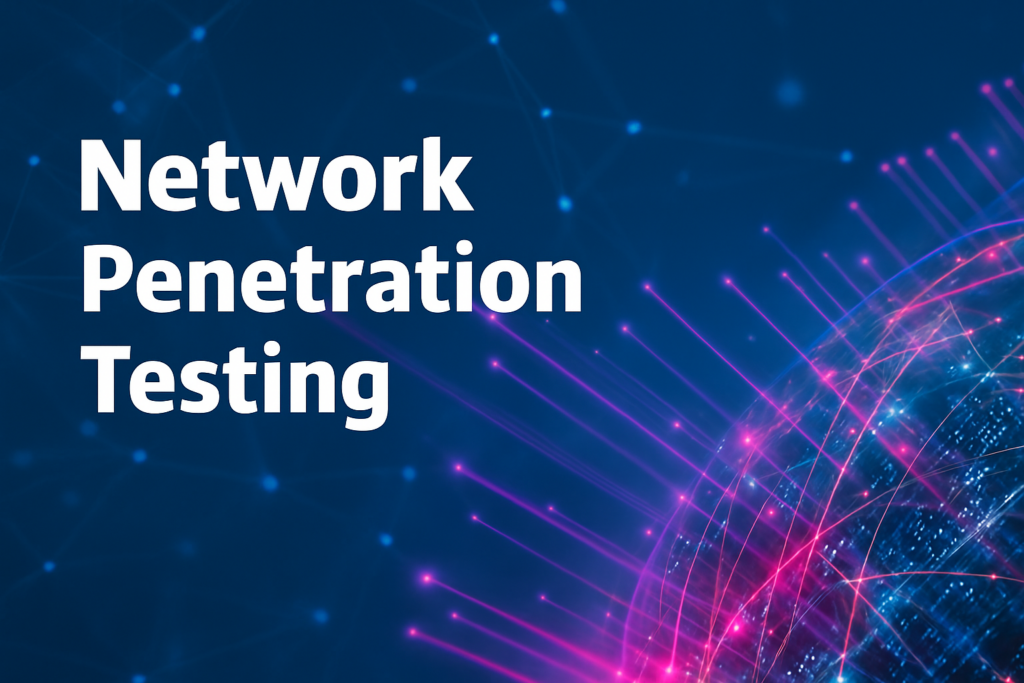
Here's How We Find the Flaws Inside Your Firewall
Maybe it's a contractor with too much access, an employee who clicks on the wrong link, or an attacker using stolen credentials. You must know what to do if the wrong person penetrates your digital walls.
And that's the mindset behind internal network penetration testing. It's a simulated attack from an insider's perspective to find your weak spots before a real attacker does.
The internal pentest process moves beyond your perimeter defences to answer a critical question: how secure are you on the inside?
A Quick Look at an Internal Pentest
An internal pentest is an authorised, security assessment we perform from inside your company's network. Unlike an external pentest, where we test your defences from the outside, this test assumes the attacker has already found a way in.
The goal is to see how far an intruder can get.
- What systems can they compromise?
- What sensitive data can they access?
- Once they're on your local network, what kind of damage can they do?
This approach gives you a realistic view of your resilience against insider threats.
The Process of Internal Network Penetration Testing
To understand the value of this test, it helps to see the anatomy of the attack. A professional internal penetration test isn't a random hack; it's a structured, methodical process designed to uncover your vulnerabilities systematically.
Phase 1: Planning and Reconnaissance
Before anything, we work with you to define the objectives and "rules of engagement." Then, the reconnaissance begins.
Our testers start by mapping your internal network to understand the landscape. They look for active devices, open ports, running services, and user accounts.
The goal is to build a blueprint of your internal environment to identify potential targets.
Phase 2: Vulnerability Analysis
With a map of your network, we begin to identify potential weaknesses. This involves a combination of specialised tools and manual, expert analysis.
We look for known vulnerabilities in your software, weak configurations, and poor security practices.
This isn't just running a scanner. It's an experienced specialist interpreting the results with an attacker's mindset to see how different, smaller issues could be chained together for a larger impact.
Phase 3: Exploitation, Aka the "Attack"
Once a promising weakness is found, the exploitation phase begins.
We attempt to gain access to your specific systems. This is the hands-on "attack" that shows how an initial foothold can be gained.
But in gaining access, we're just getting started.
Phase 4: Post-Exploitation and Privilege Escalation
The real goal is post-exploitation. Once we're on a machine or system, we see how deep we can go.
Can they:
- Move from a standard user account to a domain administrator?
- Access sensitive file shares, databases, or executive emails?
- Move laterally to other systems on the network?
This phase mimics an attacker's true objective: to gain control of your most valuable assets.
In this way, we demonstrate the potential business impact of a real breach.
Phase 5: Reporting and Remediation
After the testing is complete, we document all of our findings in a clear, actionable report.
A good report (like the ones you get from 7ASecurity) does more than just list vulnerabilities. It explains the risk of each flaw and provides detailed, step-by-step guidance on how to fix it.
We also include free fix verification to ensure the issues have been properly resolved.
Common Flaws Uncovered by an Internal Penetration Test
While every network is different, we often find similar types of vulnerabilities.
Many of these issues are difficult for automated scanners to detect and require the critical thinking of a human attacker.
Common findings include:
- Missing Security Patches. Unpatched software on servers, printers, and workstations remains one of the easiest ways for an attacker to move through a network.
- Weak or Default Passwords. Simple, reused, or factory-default passwords are still a common sight and provide an easy win for any intruder.
- Flat Networks. Many networks lack proper segmentation. This means an attacker who compromises a low-value asset, like a workstation in the marketing department, can easily move to a high-value server in finance.
- Excessive User Permissions. Employees often have access to far more data and systems than they need for their jobs. This "privilege creep" means that if their account is compromised, the damage can be widespread.
- Misconfigured Systems. From servers with unnecessary services running to cloud storage buckets with improper permissions, misconfigurations are a frequent source of critical vulnerabilities.
Best Practices for Your Next Internal Network Penetration Test
- Define a Clear Scope. Know exactly what systems and subnets are in scope and which, if any, are off-limits.
- Choose the Right Scenario. A test can simulate different threats. For example, we can start with zero access to see what a guest on your Wi-Fi could do, or we can start with standard employee credentials to simulate a malicious insider.
- Test Regularly. Your network is always changing. An annual test is a good baseline, but you should also test after any major changes to your infrastructure.
- Pick the Right Partner. Look for a team with a manual, expert-led approach. The reason we find critical flaws that others miss is our focus on in-depth, human-led analysis over automated scans.
- Use the Results to Improve. The goal is not just to get a report, but to use it. The findings from an internal pentest should be used to prioritise fixes and strengthen your overall security strategy.
You Can't Fix What You Can't See
An internal network penetration test provides the crucial visibility you need to find and fix the risks hiding inside your network. It's a comprehensive service that moves beyond theory and shows you what could really happen in a breach.
Let's find your hidden risks so you can fix them.

